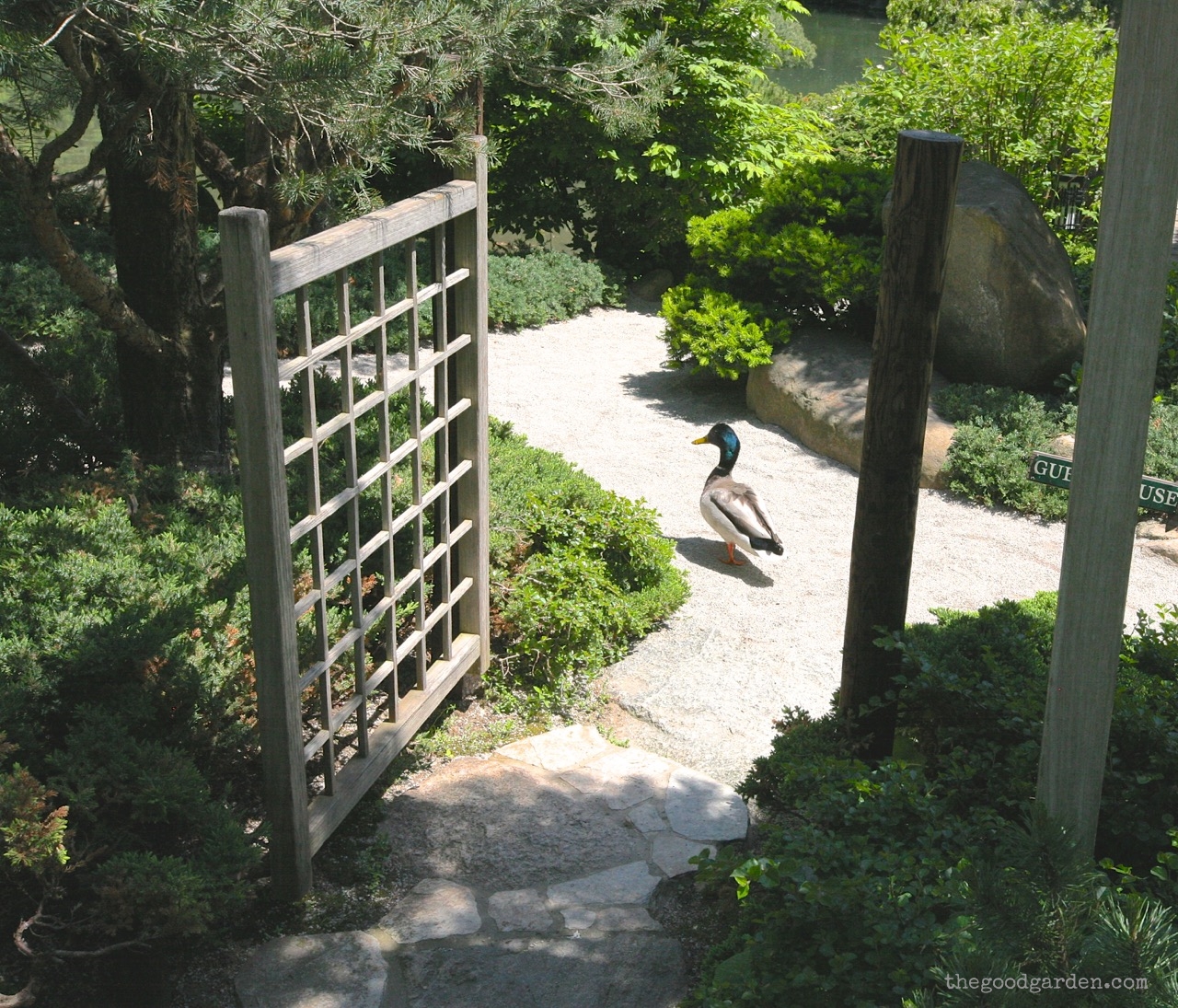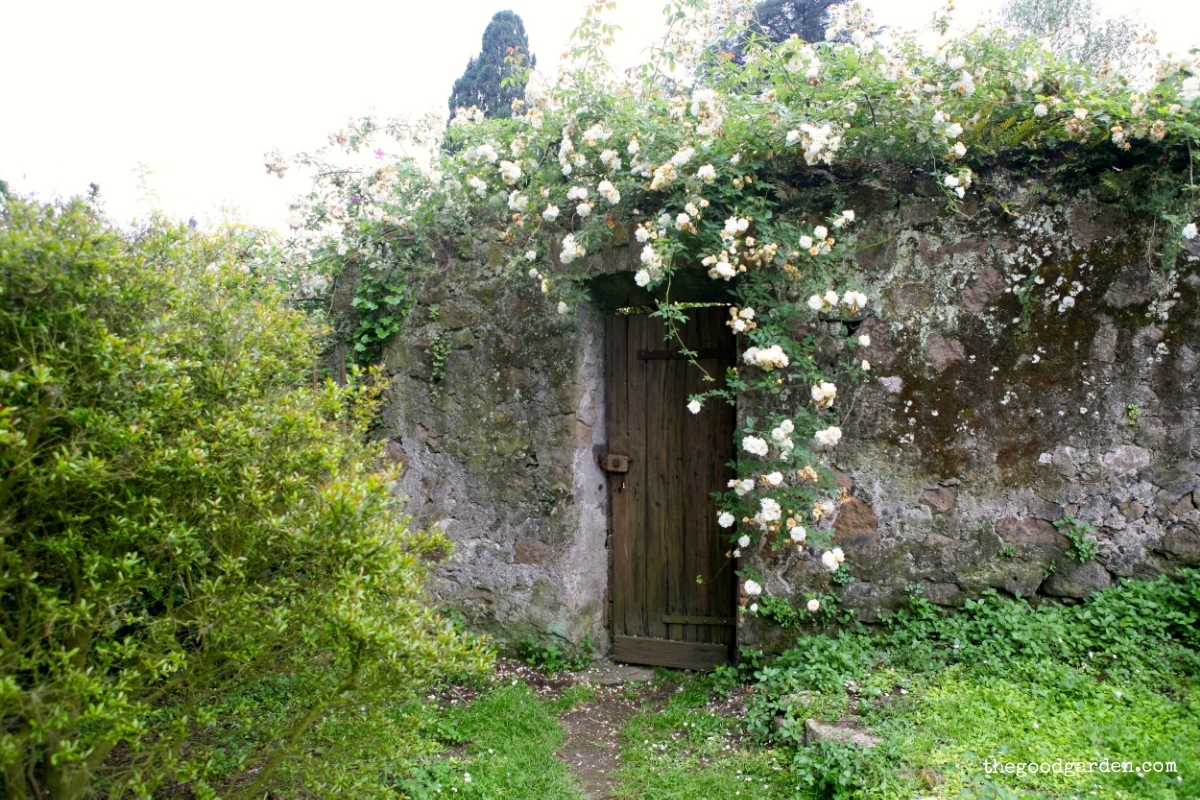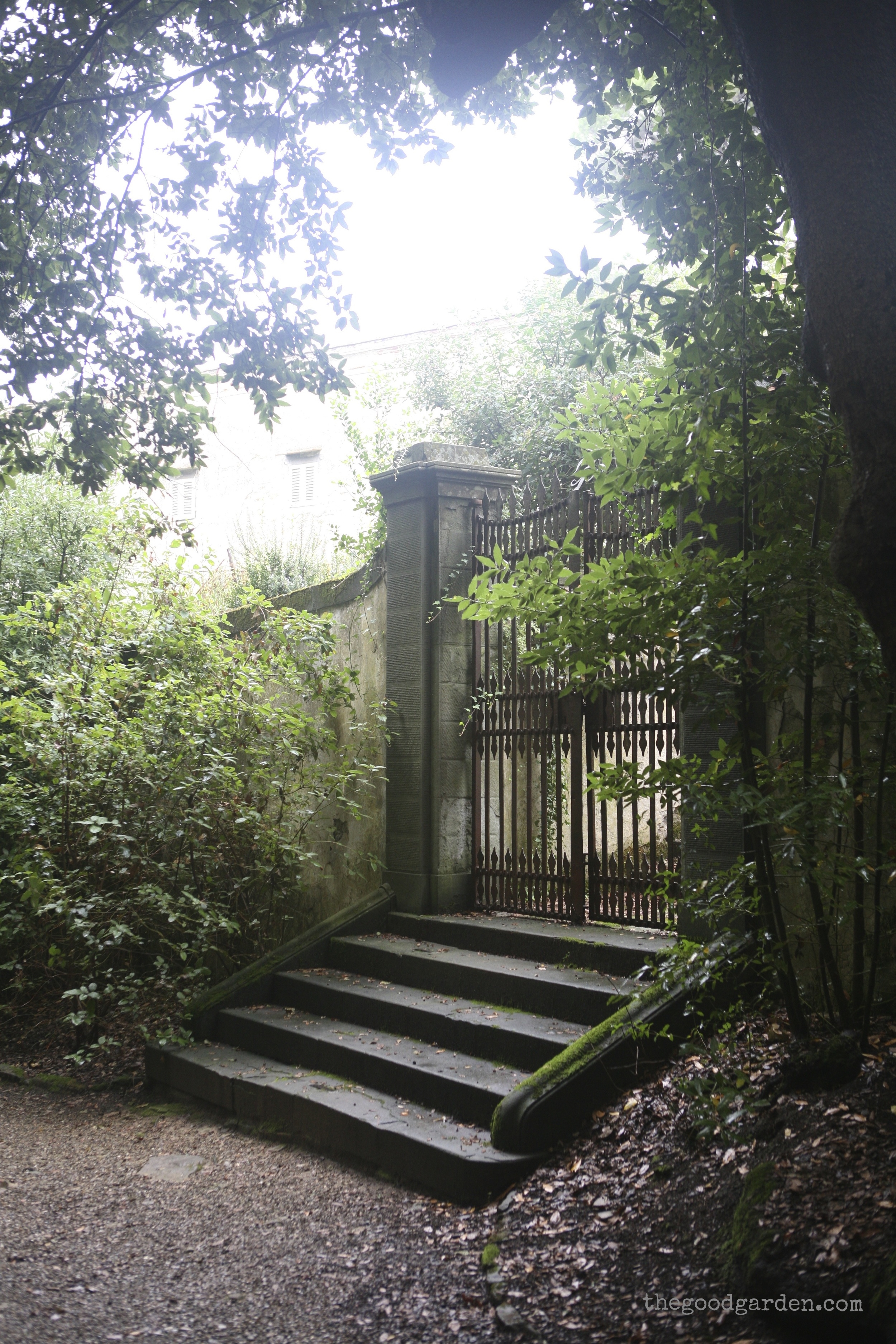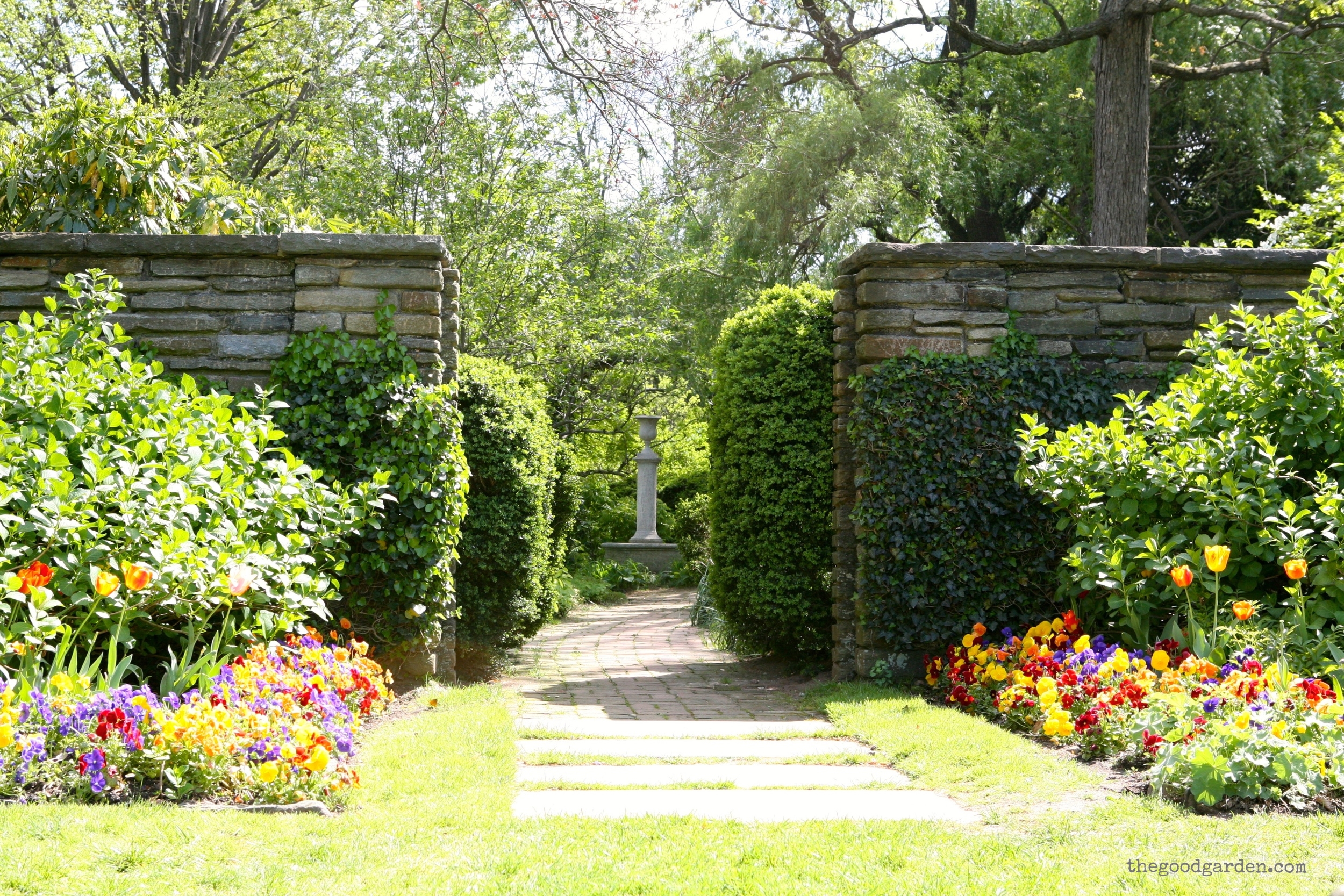There is nothing like a good garden gate to welcome us into an outdoor space. Garden gates tell us where to enter the landscape – mark the separation between the outer and inner worlds of the garden - and provide a sort of invitation. They can be a focal point; and signal when there are other sections to visit. Stone and masonry gates add gravitas to the landscape, and create a sense of enclosure and shelter that is so important. Through their design, materials, and ornamentation they reinforce the style of the garden.
Here are a few of my favorite gates:
Anderson Japanese Garden: A simple lattice gate in Rockford, Illinois leads from a rock garden to a pond strolling garden. A friendly duck quietly waddles by. The Anderson Japanese Garden was designed by Hoichi Karisu to offer visitors a place to clear the mind, restore the spirit, and energize the soul.
Giardini di Ninfa: Set in Latina, Italy we see a simple white rose climbing a wooden garden gate and stone wall to create an idyllic composition. Ninfa was a bustling ancient city, abandoned in the 1300’s. It remained dormant under the stewardship of the Caetani family for centuries. In the 1920’s the family began to convert the town into a romantic picturesque ruin, shoring up the buildings and planting hundreds of roses.
Sissinghurst Castle: An old wooden gate in a brick wall creates a focal point at this Kent, United Kingdom garden. It creates a sense of mystery as to what lies beyond, and it extends an invitation to explore. Sissinghurst Castle has roots dating to the 1300’s, but the arts and crafts garden we see today was started in 1930 by wife and husband team Vita Sackville-West and Harold Nicolson.
Boboli: A clearing in the woods at Boboli Gardens in Florence, Italy leads to a gentle flight of steps and an old iron gate. These gardens were commissioned by Eleonora di Toledo, wife of Cosimo I de Medici, Grand Duke of Tuscany. Eleonora was from Spain and probably brought ideas from gardens there.
Dumbarton Oaks: Stone pilasters frame the “Terrior Column” and invite guests to explore other sections of this property in Washington, DC. “The Oaks” was designed in the 1920’s by landscape architect Beatrix Farrand and owner Mildred Bliss as a series of garden rooms and terraces. A genius solution to this challenging hillside property.
Do you have a favorite garden gate?
If you like these images, they make a great gift as note cards, each card features the story of the garden on the back.






